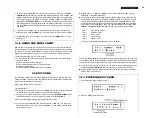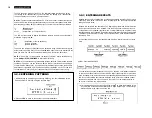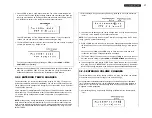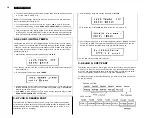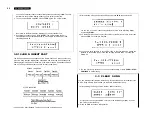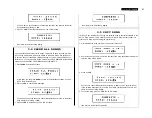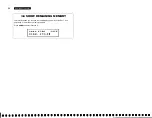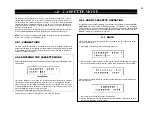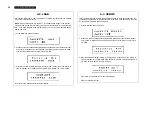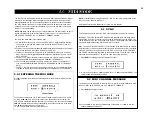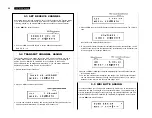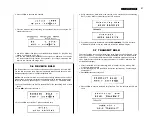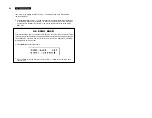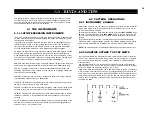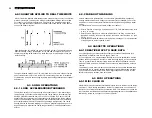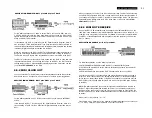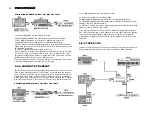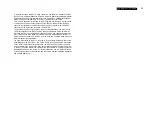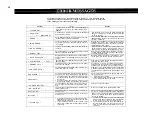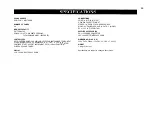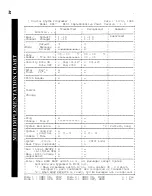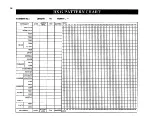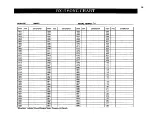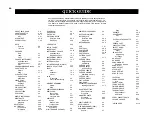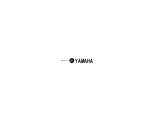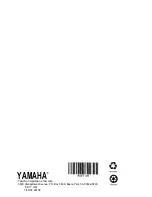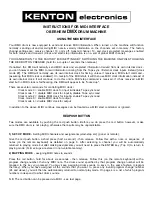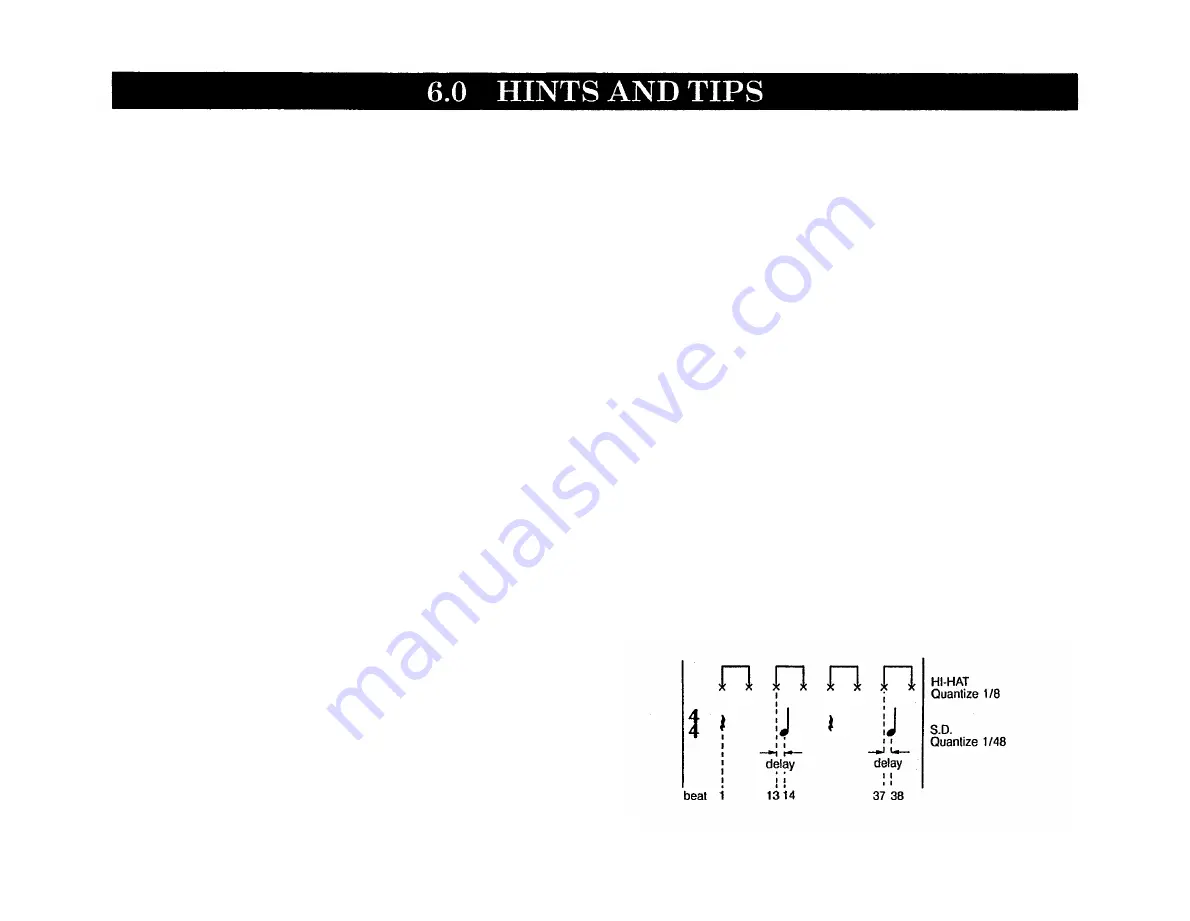
29
This chapter contains a variety of useful hints, some essential, some creative, to add to
your enjoyment of the RX17. These will give you useful knowledge to encourage you to
go beyond the limitations of this manual and create your own music. The RX17, in spite
of its compact dimensions, has enormous potential!
6.1 THE lNSTRUMENTS
6.1.1 LATIN PERCUSSION INSTRUMENTS
The RX17’s instruments include 14 exciting Latin percussion sounds, in addition to the
12 basic drum sounds. Latin percussion appears in all types of contemporary music,
from reggae to rock and jazz.
In general, Latin percussion is used in two basic ways: to provide sudden bursts of
colourful timbres in a song, or to add a steady beat to your music. It can be difficult to
play rapid Latin-style breaks or rolls in Real Time Write, so the Step Write Mode allows
even the inexperienced musician to create impressively complex passages.
CONGAS. The RX17’s three Conga sounds are effective when used together. Congas
usually come in pairs, and conga players rarely play both congas simultaneously.
A characteristic action of conga players is to play the two congas alternately, or play
one beat on one conga, and two on the other, to create varying patterns. The high conga
has two sounds on the RX17, muted and open for further effectiveness.
BONGOS. Less powerful than congas, but equally effective, the light sound of bongos
can add drive to a straight rock number, or rhythmic interest to a medium-tempo song.
AGOGO. The agogo is often used to create the characteristic samba rhythm, with
alternating high and low notes. It should be used sparely, as its piercing metallic tone
cuts through any musical setting.
COWBELL. A steady four beats to a bar on a cowbell can really move a song, while fast
rhythmic playing will add spice to an adlib section.
WHISTLE. The whistle is used humorously in Latin music to start off a song, or signal
the end of a solo or verse, with a few quick blasts.
SHAKER. The shaker is most commonly used to provide a steady 8th-note rhythm behind
an up-tempo song. Use it at a lower level, so that it will blend in with the musical fabric.
TIMBALES. Timbales have great impact and are often used to greatest effect in sudden
splashes of 16th notes, or in syncopations with odd rests in between, to add energy to
any song.
CUICA. A fascinating sound caused by rubbing a stick connected to the inside of the
drumskin, the cuica adds color to any music. Ideally, it’s best used to highlight just one
section of a song – for example, a solo.
6.2 PATTERN OPERATIONS
6.2.1 INSTRUMENT CHANGE
While writing a Pattern, you can change an instrument and record the new instrument
into the same Pattern, even on the same beat as the old instrument. So you can use all
26 RX17 instruments in a Pattern.
For example, after entering a Bass Drum part in Step Write, press
INST CHANGE.
Press
BD twice, to select Tambourine. Press
INST CHANGE
again to return to Step Write. You
can now enter a tambourine part, even on beats where a Bass Drum part has been
entered.
If
you attempt to enter more than 11 instruments on one beat, previously entered
instruments will be cleared (erased). However, the following instruments have priority,
and will not be cleared: BD, SD, RIMSHOT, HH Open, HH Closed, RIDE, CRASH.
NOTE:
The maximum number of instruments that can be played on the same beat is 11.
6.2.2 QUANTIZE APPLIED TO STEP WRITE
In Step Write, Quantize is a time-saver because it minimizes the number of rests you
need to enter. Although your Pattern may contain a complex arrangement of rhythms.
you can save Pattern writing time by writing each instrument in at the appropriate
Quantize setting.
Use a Quantize setting of 1/8 to enter basic parts such as Bass Drum and Snare Drum.
Reset Quantize to 1/16 or even 1/32 to enter complex or rapid parts such as Hi-Hat or
Bongo. For triplets, use a Quantize setting of 1/12 or 1/24.
Using a high Quantize setting allows you to add subtle timing variations. For example,
many rock drummers create an exciting feel by slightly delaying their off-beat on the
snare drum. This is easy to create in the Step Write Mode. In this example, the Snare
Drum is entered using a Quantize rate of 1/48. The 2nd and 4th quarter-notes fall at
beats 13 and 37 respectively, so the Snare Drum notes are entered at beats 14 and 38
to provide the delay.
Summary of Contents for RX-17
Page 1: ...DIGITAL RHYTHM PROGRAMMER YAMAHA AUTHORIZED PRODUCT MANUAL ...
Page 2: ...YAMAHA DIGITAL RHYTHM PROGRAMMER OWNER S MANUAL ...
Page 7: ...2 ...
Page 41: ...36 ...
Page 43: ...38 ...
Page 44: ...39 ...
Page 46: ...SINCE 1887 YAMAHA ...

